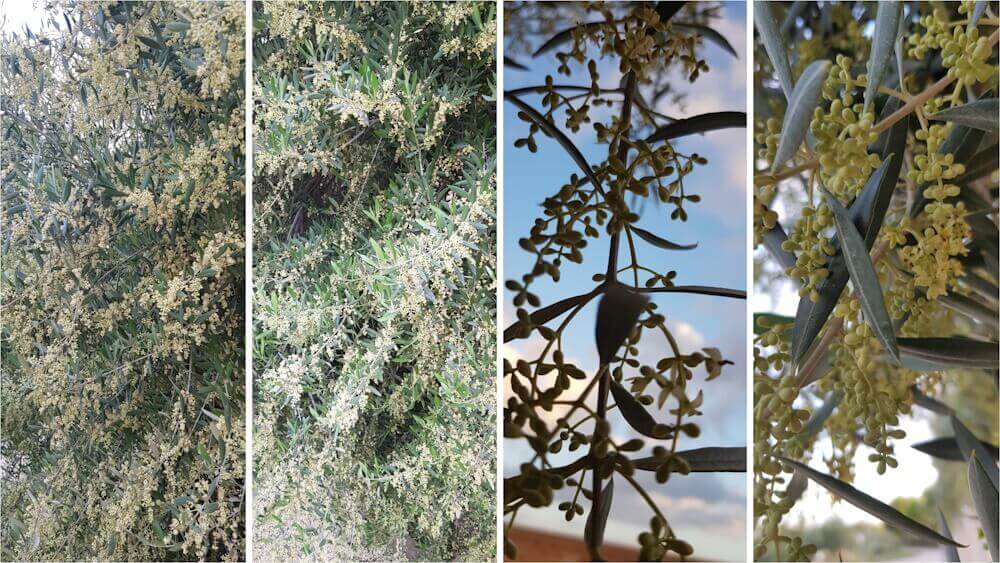Olive flowering: biostimulant treatments to increase yield

Blossoming olive grove
The flowering of the olive tree is the most important stage in the crop cycle, as it determines the future yield of the crop. It is a critical phase, a vegetative explosion, when the tree’s energy requirements are at their highest so that the flowers can become the new fruits or olives.
Being mainly Mediterranean crop, the olive tree flowers after winter. Between the end of April and the beginning of May, the branches fill with small flower buds in a relatively short process lasting about 3 weeks, which is usually the time from the first to the last flower opening.
For the olive tree to flourish, temperatures typical of the early stages of spring are required, without frost. For this reason, the olive grove is a crop that is perfectly adapted to the Mediterranean climate.
As we said in the introduction, the olive flowering is a critical phase in which we, as growers, must guarantee the nutritional resources that the olive grove needs to complete its vegetative development.
When to use biostimulants?
This is where biostimulant treatments for olive flowering come into play, not only to provide essential nutrients, but also to meet the energy requirements of the tree.
Seipasa recommends the use of Kynetic4 to accompany the olive grove in its flowering process, guiding it towards an optimal fruit set process and maximum quality.
Kynetic4 is a plant-based biostimulant designed to stimulate and optimise the natural flowering process at its 4 key points: flower development, pollination, fertilisation and fruit set.
Quality of flowering and fruit set
Its use favours the synthesis of specific proteins, providing an energetic stimulus at a time when the plant needs it most. During flowering, the tree needs a large supply of energy to complete the physiological processes in progress and to cope with the different types of stress that this period entails. What we achieve with Kynetic4 is to ensure that the olive grove has this extra supply and that it is not used to meet other needs or processes in the tree.
Kynetic4 also favours the formation and elongation of the pollen tube and increases the viability of the pollen: higher nutritional quality of the nectar and more attractive to pollinators, thus positively affecting the whole process of pollination of other olive trees.
If we consider that about 2-3% of the flowers of the olive tree are those that will go through all the phases and become fruit, the result of applying biostimulant treatments that ensure the quality of flowering and fruit setting must be measured in terms of production and yield.
Higher % of commercial fruit
Graph 1 shows the results of the Kynetic4 trial in olive groves. In the plots treated with the Seipasa biostimulant, its application has increased the number of viable fruits from flowering and reduced the incidence of abortion, resulting in a significant increase in production compared to the control and the reference treatments.
.jpg)
Figure 1. Kynetic4 trial on olive groves. % increase in average production per hectare.
Figure 2 looks at the percentage of deformed olives, a variable that is significantly reduced in the plots treated with Kynetic4, thanks precisely to the action of the product, which ensures flowering and fruit set in optimal conditions.
Figure 2. Kynetic4 trial on olive groves. % of olives deformed.
Kynetic4 also makes the crop more adaptable to adverse conditions such as salinity, drought, temperature and transplanting. It also stimulates the recovery of plant tissues after an episode of stress.


.jpg)